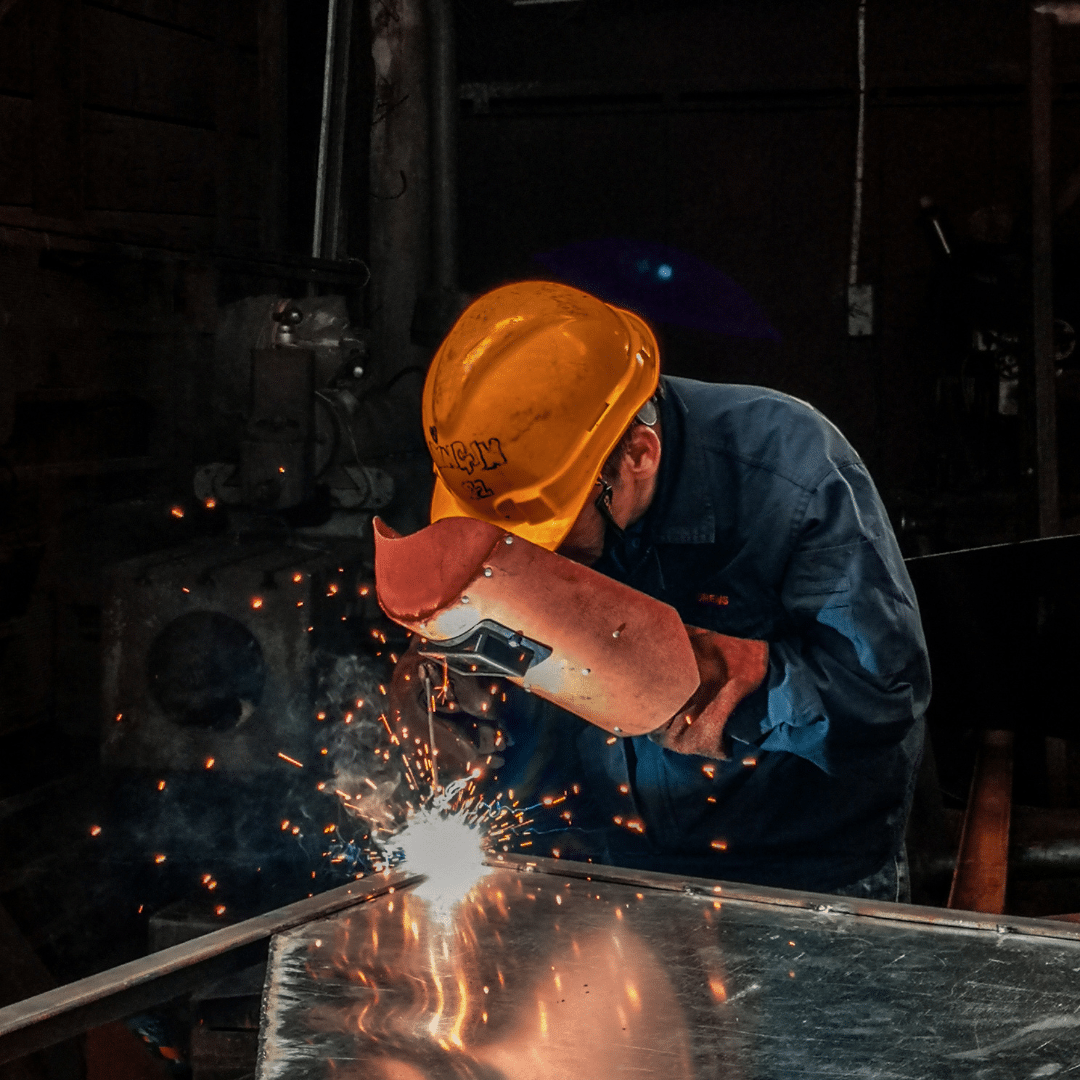What Is Metal Fabrication?
Understanding Metal Fabrication
Metal fabrication is the backbone of many industries, playing a crucial role in creating durable and functional metal components for construction, transportation, and manufacturing.
From intricate brackets and small fittings to large-scale structural frameworks, metal fabrication brings raw materials to life through a combination of skilled craftsmanship and advanced machinery. But what exactly is metal fabrication, and why is it so essential?
What is Fabricating Metal?
At its core, metal fabrication is the process of transforming raw metal materials into finished products through various techniques such as cutting, bending, welding, grinding, and assembly.
The products created through this method range from everyday household items to massive industrial structures.
The process isn’t just about shaping metal—it’s about precision, durability, and engineering excellence. Every component is carefully designed and manufactured to meet specific industry needs, ensuring strength, longevity, and efficiency.
The Metal Fabrication Process
The fabrication process consists of several key stages, each playing a vital role in ensuring the final product meets the required specifications:

1. Design & Planning
Before any metal is cut or shaped, the process begins with design. Engineers and fabricators work together to create detailed drawings and specifications, considering factors like material strength, intended use, and production methods. Advanced CAD (Computer-Aided Design) software is often used to model the final product before production begins. At B.B. Price, we provide bespoke fabrication solutions to match our clients' unique requirements.
2. Cutting
Cutting is one of the most fundamental steps. Raw metal sheets, bars, or rods are precisely cut down to size using a variety of techniques. Some of the most commonly used cutting methods include:
- Laser Cutting – A high-precision method using focused light beams to slice through metal with minimal waste.
- Plasma Cutting – Ideal for cutting thick metal sheets with high-speed precision.
- Saw Cutting – Used for cutting bars and tubes to the desired length.
- Shearing – A mechanical process that cuts metal without the use of heat, reducing material deformation.
3. Bending & Folding
Bending and folding are used to shape metal into desired angles or curves. This process is crucial for creating components such as brackets, frames, and enclosures.
A common method involves using a press brake, where a punch forces the metal into a die, creating bends that are precise and uniform. Since steel is naturally strong and rigid, heavy-duty machinery is required to bend it effectively.
4. Welding
Welding is perhaps the most well-known technique. It involves joining two or more metal pieces using high heat, fusing them together into a single, strong unit.
There are various welding techniques, including:
- MIG (Metal Inert Gas) Welding – Fast and efficient, commonly used for structural applications.
- TIG (Tungsten Inert Gas) Welding – Provides high precision, ideal for detailed or delicate work.
- Stick Welding – A robust method often used for outdoor or industrial applications.
At B.B. Price, our highly skilled welders ensure each joint is strong, durable, and built to last.
5. Grinding & Finishing
Once the metal has been cut, shaped, and welded, it undergoes finishing processes to refine its appearance and function. Grinding smooths out rough edges and imperfections, while polishing and coating enhance durability and corrosion resistance.
Finishing techniques include:
- Grinding – Uses abrasive tools to refine edges and create a smooth surface.
- Powder Coating – Adds a durable, protective layer to metal surfaces.
- Galvanizing – Prevents rust and extends the metal’s lifespan.
6. Assembly
The final step is assembling the various components into a complete, functional product. This may involve fastening, bolting, or further welding. Quality checks are conducted to ensure every product meets industry standards and customer specifications.
Modern Methods of Forging
In today’s society, blacksmithing has evolved into a highly skilled, technical and automated industry. At the heart of all forging techniques, it paved the way forwards for the forging industry to now include a wide range of techniques including hand forging, drop forging and upset forging.
Modern forging methods are defined by their precision, efficiency and ability to shape high-quality metal components for industries including automotive, aerospace and construction. At B.B. Price, we have maintained the art of hand forging, but we have also embraced modern forging methods such as drop forging and pressing in order to deliver quality results for our clients.
Drop Forging
Drop forging is now a widely used method of forging when it comes to shaping metals to create consistency in mass production. Using a hammer to force metal into a die, you can be sure that all shapes will be the same with incredible strength and durability too.
Pressings
This is another form of re-shaping metal using a pressing machine to flatten or shape the metal in one or multiple presses. This can be completed on cold metals and sheets as opposed to requiring molten metal, with the impact being a powerful squeeze as opposed to a sudden bash.
At B.B. Price, we utilise both forms be metal manipulation, embracing the modern methods of forging and re-shaping metals to deliver mass production alongside the hand forging technique that still delivers precision and high levels of craftsmanship.

What is a Metal Fabricator?
A metal fabricator is a skilled professional responsible for cutting, shaping, assembling, and finishing metal products. They work with various types of metals and use an array of tools, from hand-operated machinery to advanced computer-controlled systems.
Metal fabricators must have a deep understanding of metallurgy, blueprint reading, and welding techniques. Their work is essential in industries such as construction, automotive, aerospace, and manufacturing.
At B.B. Price, our fabricators are highly trained experts, ensuring each product is crafted with precision and durability to meet the highest industry standards.
What is the Difference with Sheet Metal Fabrication?
While standard fabrication involves working with a wide range of metal types and thicknesses, sheet metal fabrication specifically focuses on thin metal sheets. This process is often used for creating enclosures, panels, brackets, and casings, where lightweight yet durable materials are required.
Key differences include:
- Thickness of Material – Sheet metal typically ranges from 0.5mm to 6mm in thickness, whereas standard fabrication deals with thicker and more varied materials.
- Forming Techniques – Sheet metal fabrication relies heavily on bending, cutting, and stamping techniques, whereas standard fabrication includes heavier processes like machining and structural welding.
- Applications – Sheet metal is commonly used in industries like electronics, automotive, and aerospace, whereas standard fabrication is used in construction, heavy machinery, and industrial infrastructure.
Applications
Metal fabrication plays a vital role across numerous industries, providing structural integrity and functionality for a wide range of applications. Some of the most common applications include:
- Construction & Infrastructure – Fabricated steel is essential for buildings, bridges, tunnels, and structural frameworks.
- Manufacturing & Industrial Equipment – Custom machinery, conveyor systems, and industrial components rely on precision fabrication.
- Automotive & Transportation – Vehicle frames, panels, and supports enhance safety and durability in transport sectors.
- Energy & Utilities – Power plants, pipelines, wind turbines, and solar panel mounts require fabricated metal for efficiency and longevity.
- Aerospace & Defence – High-strength, lightweight components are manufactured for aircraft and military applications.
- Marine & Shipping – Ship hulls, mooring systems, and corrosion-resistant materials are critical for maritime use.
- Telecommunications – Metal towers, brackets, and cable support systems ensure durable and reliable communication infrastructure.
Why Choose B.B. Price?
For over 100 years, B.B. Price has been a leading metal fabricator in the UK, delivering high-quality, precision-engineered products across various industries. Our team of expert fabricators is fully certified and skilled in working with materials up to 12 metres in length. Whether you need standard steel components or custom-made fabrications, we have the expertise and technology to meet your needs.
Get a Free Quote Today
B.B. Price is your trusted metal fabricator near you. Based in Halesowen in Birmingham, we provide custom services across the country, from London and Nottingham to Manchester and beyond.
Whether you need small fittings, stainless steel components, or large-scale components, we’ve got you covered. Contact us today for a consultation and let B.B. Price bring your project to life with precision and accuracy.

